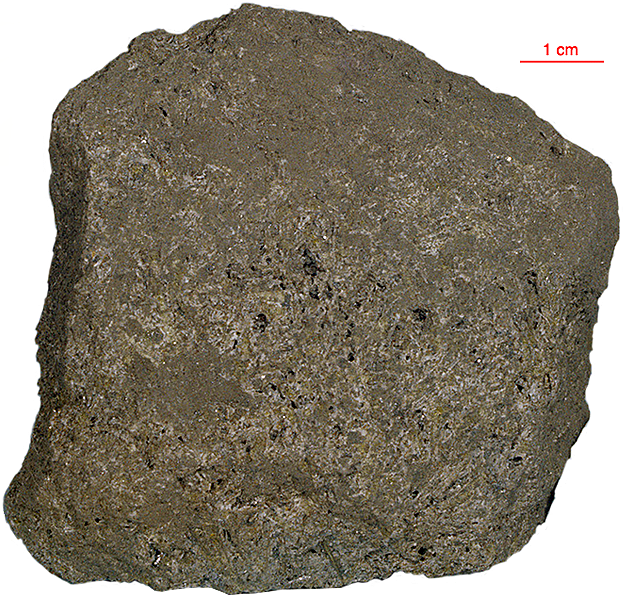
Fact sheet
15475 is a coarse-grained porphyritic basalt dominated by large subhedral pyroxene crystals (up to 1.5 cm) set in a sub-ophitic matrix of anhedral pyroxene and plagioclase. Pore space is vuggy, rather than vesicular. Interstitial phases include pyroxferroite, chromite-ulvospinel, cristobalite, ilmenite, K-rich glass, tranquillityite, whitlockite and rare blebs of troilite. Metallic iron is also present as inclusions in pyroxene. Rotation 1 shows a remarkable twinned and zoned pyroxene and rotation 2 shows elongate prisms of troilite.
The sample weighed 406.8 grams before analysis. It has been dated at 3.37±0.05 billion years (Sm/Nd).
One piece of 15475 is on public display at the American Museum of Natural History in New York.
Further details of this and other Apollo samples are here: http://curator.jsc.nasa.gov/lunar/
The Apollo 15 landing site was in the Apennine Highlands, and close to Hadley Rille — a long, narrow winding valley. Approximately 76 kg of lunar material, including soil, rock, core-tube and deep-core samples, were returned to Earth.
This mission was the first flight of the Lunar Roving Vehicle which allowed the astronauts to venture further from the Lunar Module than in previous missions. During three periods of extravehicular activity, or EVA, on July 31st, and August 1st and 2nd, Scott and Irwin completed a record 18 hours, 37 minutes of exploration, travelling 17.5 miles, in the first car that humans had ever driven on the Moon.
Apollo 15 was launched on 26 July 1971.






